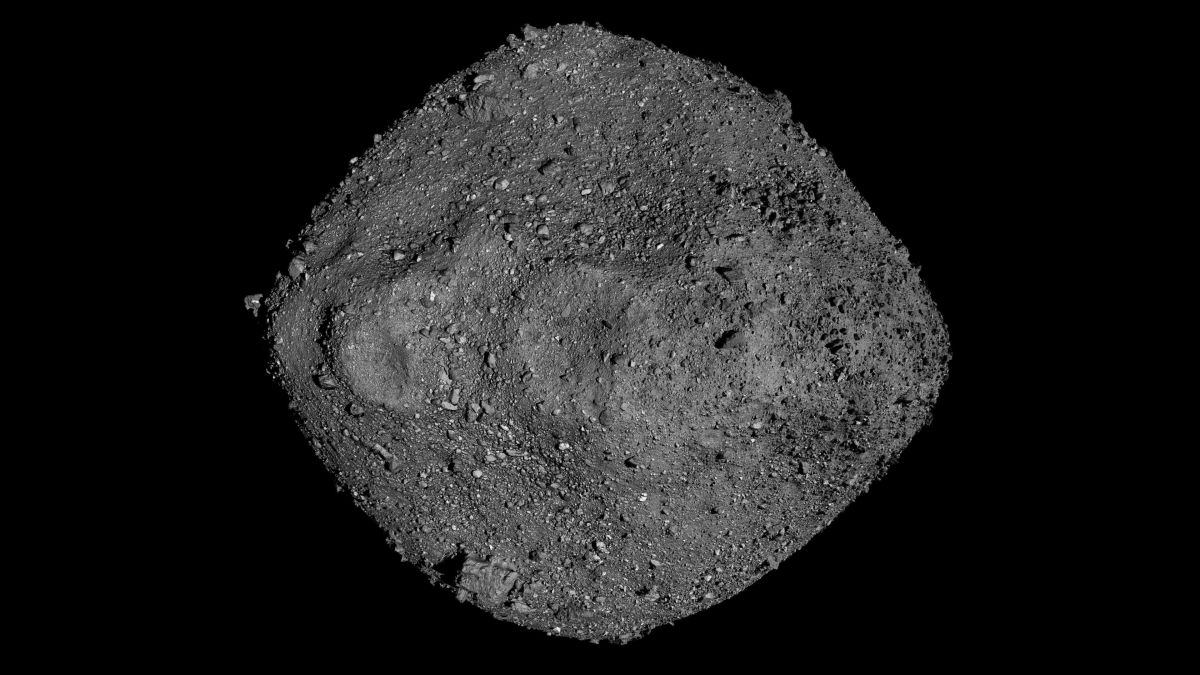James Webb (Image credit: NASA) The James Webb Space Telescope is named for James Webb, who was NASA’s second administrator, in office from 1961 until 1968. Although he is most commonly associated with the Apollo program that sent humans to the moon for the first time just after his tenure ended, Webb also supported the science program at NASA, according to the agency. The observatory project, originally dubbed the Next Generation Space Telescope, was named for Webb in 2002. However, as the spacecraft has inched toward the launch pad, its…
Read MoreMonth: July 2022
Asteroid Bennu nearly ate NASA’s sampling spacecraft
NASA’s asteroid-sampling spacecraft had a near-death experience at Bennu, according to the mission team. In October 2020, the agency’s OSIRIS-REx spacecraft nearly sank into the surface of the rubbly asteroid while picking up rocks for shipment to Earth in 2023, team members revealed Thursday (July 7). The spacecraft only escaped getting stuck or sinking into oblivion within Bennu by firing its thrusters at the right moment. “We expected the surface to be pretty rigid,” principal investigator Dante Lauretta, a planetary scientist at the University of Arizona, told Space.com. “We saw…
Read MoreNASA Highlights Climate Research on Cargo Launch, Sets Coverage
NASA and SpaceX are targeting 8:44 p.m. EDT Thursday, July 14, to launch the agency’s next investigation to monitor climate change to the International Space Station.
Read MoreNASA unveils list of 1st targets for James Webb Space Telescope
Our first glimpse through the eyes of NASA’s massive new observatory will include nebulas and an alien world. Although the long-awaited images won’t be available until a live broadcast on Tuesday (July 12) at 10:30 a.m. EDT (1430 GMT), NASA has released a list of the targets that will appear in the first science-quality images released from the next-generation James Webb Space Telescope. Agency leaders have promised that these images will reveal an unprecedented look into some of the deepest views yet of the cosmos. The targets, which NASA announced…
Read MoreSpace Station Science Highlights: Week of July 4, 2022
Crew members aboard the International Space Station conducted scientific investigations during the week of July 4 that included testing a device to monitor spacecraft air quality, studying how microgravity affects a person’s grip and arm movements, and assessing possible adverse effects of space station noise on hearing.
Read MoreThis Week’s Sky at a Glance, July 8 – 16
July is Scorpius season. Maybe you know of the Cat’s Eyes in the Scorpion’s tail, but how about the Little Cat’s Eyes in the Scorpion’s body? The Sagittarius Teapot follows not far behind. The post This Week's Sky at a Glance, July 8 – 16 appeared first on Sky & Telescope.
Read MoreNASA Updates Coverage for Webb Telescope’s First Images Reveal
NASA, in partnership with ESA (European Space Agency) and CSA (Canadian Space Agency), will release the James Webb Space Telescope’s first full-color images and spectroscopic data during a live broadcast beginning at 10:30 a.m. EDT Tuesday, July 12, from NASA’s Goddard Space Flight Center in Greenbelt, Maryland.
Read MoreMinotaur rocket explodes shortly after launching on test mission for US military
A Minotaur II+ rocket exploded just after launching on a test mission from California’s Vandenberg Space Force Base early Thursday morning (July 7). The explosion occurred about 11 seconds after liftoff, which took place at 2:01 a.m. EDT (0601 GMT; 11:01 p.m. local California time on July 6), according to a short press release (opens in new tab) issued by Vandenberg officials. No injuries were reported, and “the debris was contained to the immediate vicinity of the launch pad,” the release stated, adding that an investigative review board will determine…
Read MoreAmateur astronomer spots 34 paired-off ‘failed’ stars in brown dwarf project
A citizen scientist used old telescope data to find a trove of binary star systems that include what are sometimes dubbed “failed stars.” These stars, also known as brown dwarfs, are mysterious objects with more than 12 times the mass of Jupiter and less than half the mass of the sun. Scientists have long debated whether these objects are more like stars or very large planets, and the new detections might help settle the issue. Even with the best computing technology, humans still have an advantage spotting brown dwarfs in…
Read MoreStargazing’s Lessons for Living
Can stargazing make you a better person? The post Stargazing’s Lessons for Living appeared first on Sky & Telescope.
Read More